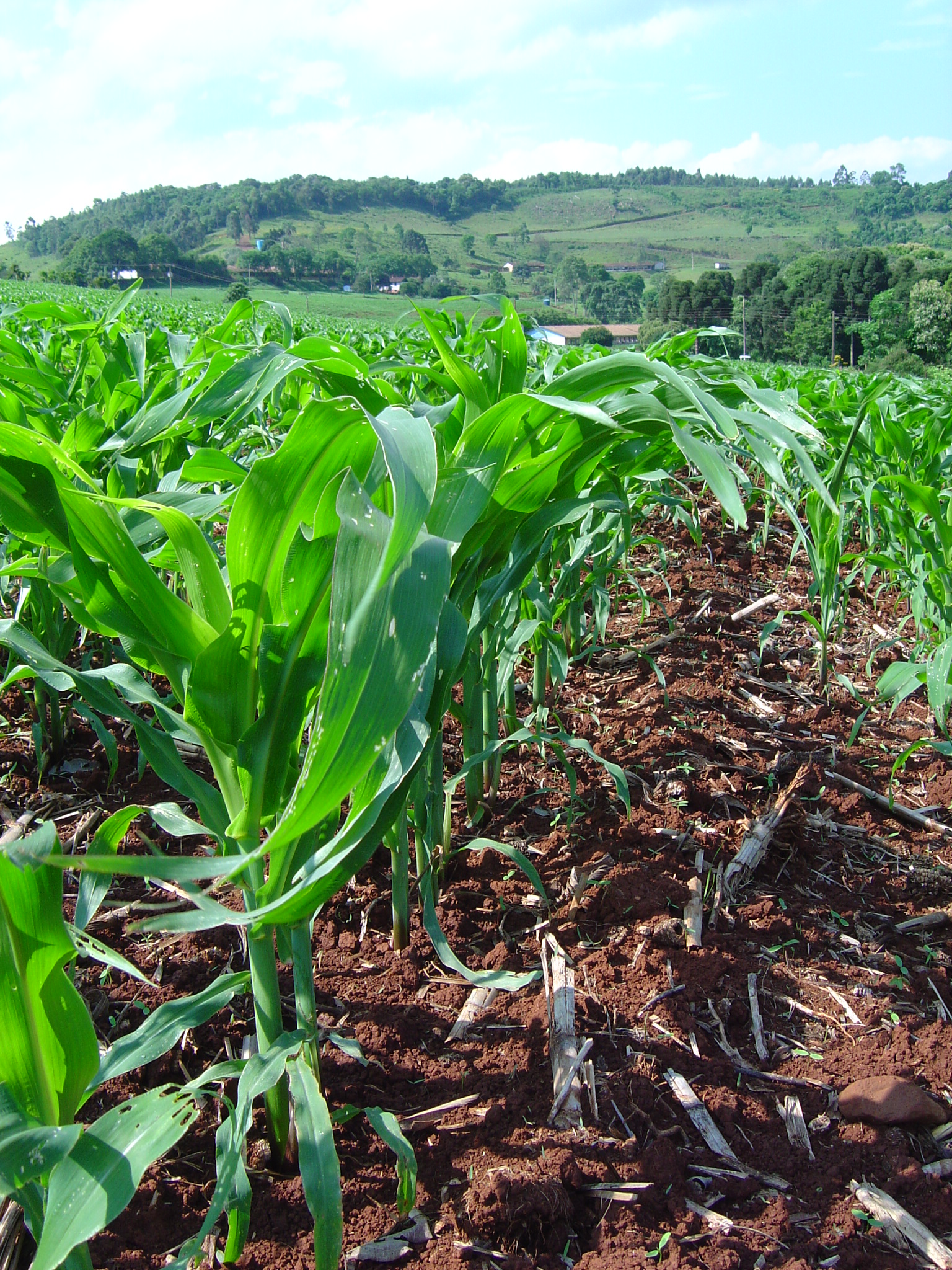Spontaneous plants, dry matter contribution and corn and soybean grain yield in sustainable and conventional production systems
DOI:
https://doi.org/10.52945/rac.v36i3.1641Keywords:
Zea mays L., Glycine max, sowing in the greenAbstract
The competitiveness of Brazilian agribusiness depends on the use of sustainable practices that respect the
environment and meet consumer demands. The weed management is an essential practice in any agricultural system. So, the objective of this work was to carry out a phytosociological survey of spontaneous plants and the contribution of dry matter in the grain yield of corn and soybean areas, conducted in sustainable and conventional systems. The study was installed in an area of 17.11ha, divided into four plots (T): T 1 - sustainable with 5.25ha; T 2 - conventional with 4.85ha; T 3 - conventional with
3.88ha; T 4 - sustainable with 3.13ha, in a corn x soybean rotation system. The sustainable and conventional plots were placed side by side in order to compare the systems. In each plot, 10 points were georeferenced to collect samples of spontaneous plants and to determine crop yields. The spontaneous and cover plants species were identified and placed in an oven at 60°C until constant mass for determination of dry matter. The species richness varied according to system and year. The increase in plant residues in the sustainable system reduced the presence of turnip, horseweed and star grass. In 2018, the sustainable soy yield surpassed the conventional one and in 2020 the conventional corn surpassed the sustainable one. In the other years, yield was similar.
Metrics
References
ALVARENGA, R.C.; CRUZ, J.C.; NOVOTNY, E.H. Cultivo do milho – Plantas de cobertura de solo. Sete Lagoas, Embrapa milho e sorgo, 2002, 7p. (Comunicado técnico, 41).
BORGES, W.L.B.; FREITAS, R.S.; MATEUS, G.P. Plantas de cobertura no controle de plantas daninhas. Pesquisa & Tecnologia, São Paulo, vol. 10, n. 1, p. 1-5, 2013.
CARVALHO, A.M.; COSER, T.R.; REIN, T.A.; DANTAS, R.A.; SILVA, R.R.; SOUZA, K.W. Manejo de plantas de cobertura na floração e na maturação fisiológica e seu efeito na produtividade do milho. Pesquisa Agropecuária Brasileira, Brasília, v. 50, n. 7, p. 551-561, 2015.
CARVALHO, F.T.; VELINI, E.D. Períodos de interferência de plantas daninhas na cultura da soja. i - cultivar iac-11. Planta Daninha, Viçosa, v.19, n.3, p. 317-322, 2001.
COMIN, J.J.; VILANOVA, C.; KURTZ, C.; MÜLLER JÚNIOR, V.; SANTOS VENTURA, B.; SEDREZ DOS REIS, M.; BRUNETTO, G.; LOVATO, P.E.; SOUZA, M. Avaliação fitossociológica de plantas invasoras em cultivo de cebola sob sistema plantio direto sem uso de agrotóxicos. Revista De La Facultad De Agronomía, La Plata, v.117, n.2, p.197-206, 2018.
CQFS-NRS. COMISSÃO DE QUÍMICA E FERTILIDADE DO SOLO. NÚCLEO REGIONAL SUL. Manual de Calagem e Adubação para os Estados do Rio Grande do Sul e de Santa Catarina. 11ª ed. Porto Alegre, SBCS-NRS, 2016. 376p.
DUFLOTH, J.H.; CORTINA, N.; VEIGA, M.; MIOR, L.C. Estudos básicos regionais de Santa Catarina. Florianópolis: Epagri, 2005. Doc. em CD ROM.
EMBRAPA. Sistema Brasileiro de Classificação de Solos. 3ª ed. Rio de Janeiro: Embrapa Solos, 2013, 353p.
GAZZIERO, D.L.P. Misturas de agrotóxicos em tanque nas propriedades agrícolas do Brasil. Planta Daninha, Viçosa, v.33, n.1, p.83-92, 2015.
ISAAC, R.A.; GUIMARÃES, S.C. Banco de sementes e flora emergente de plantas daninhas. Planta Daninha, Viçosa, v.26, n.3, p.521-530, 2008.
LORENZI, H. Manual de identificação e controle de plantas daninhas: plantio direto e convencional. 7a ed. Nova Odessa, SP: Instituto Plantarum, 2014, 379 p.
MAPA. Produção integrada no Brasil: agropecuária sustentável alimentos seguros. Ministério da Agricultura, Pecuária e Abastecimento. Secretária de Desenvolvimento Agropecuário e Cooperativismo. – Brasília: Mapa/ACS, 2009. 1008p.
MONEGAT, C. Plantas de cobertura do solo: características e manejo em pequenas propriedades. Ed. do autor: Chapecó. 336p., 1991.
MÜELLER-DOMBOIS, D.; ELLENBERG, H. A. Aims and methods of vegetation ecology. New York: John Wiley, 1974. 547p.
OLIVEIRA, A.R.; FREITAS, S.P. Levantamento fitossociológico de plantas daninhas em áreas de cana-de-açúcar. Planta daninha, Viçosa, v.26, n.1, p.33-46, 2008.
R CORE TEAM. R: A language and environment for statistical computing. R Foundation for Statistical Computing. Vienna, Austria, 2021. Disponível em: https://www.R-project.org/.
ROWE, E. Avaliação de plantas de cobertura e da comunidade infestante em duas situações de cultivo. 1997. 65f. Dissertação (Mestrado em Agroecossistemas – Programa de Pós-graduação em Agroecossistemas) Universidade Federal de Santa Catarina, Florianópolis, SC, 1997.
THEISEN, G.; VIDAL, R.A.; FLECK, N.G. Redução da infestação de Brachiaria plantaginea em soja pela cobertura do solo com palha de aveia-preta. Pesquisa Agropecuária Brasileira, Brasília, v.35, n.4, p.753-756, 2000.
YAMASHITA, O.M.; GUIMARÃES S.C.; ALBUQUERQUE, M.C.F.; CARVALHO, M.A.C.; MASSAROTO, J.A.; KOGA, P.S.; CAMPOS, O.R. Germinação de sementes de duas espécies de conyza em função da presença ou ausência de luz e interação com a adição de nitrato e ácido giberélico no substrato. Ambiência, Guarapuava, v.12 n.2 p.655-666, 2016.

Downloads
Published
How to Cite
Issue
Section
License
Copyright (c) 2023 Cirio Parizotto, Rodolfo Vargas Castilhos, Fabiana Schmidt, Cristiano Nunes Nesi

This work is licensed under a Creative Commons Attribution 4.0 International License.


